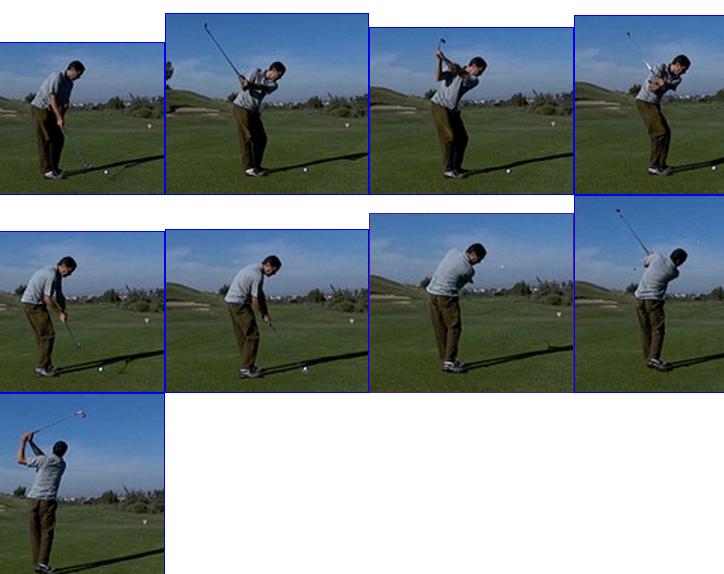Lag: I now really understand golf shafts for hitters and how they must differ in set up from a swinging protocol. The manufactures do not have it right. Only a couple have ever had it right in history.
That’s interesting. I’d love it if you would expand on that thought. I haven’t developed my “feel” enough yet to be able to sense differences in heavier steel shafts. I’ve had a pronounced disdain for graphite shafts ever since I started playing golf. I just can’t stand the feeling of a wet noodle in my hands. Even “regular” steel shafts are getting too “noodly” for me now. This is all part of the development I suppose. So far, from reading posts by yourself and others on this forum I’ve really come away with the message that, for hitters, shafts really aren’t a big deal because we don’t have to rely on timing their “kick” like swingers do. However, I suppose like most things in golf, after you get to a certain level of comprehension and “feel,” even the smaller details become important (although only as one’s development requires). Any further commentary on shafts as they relate to hitters would be most welcome.
Lag: Over the past few years I have played a lot of different iron sets and gone through half a dozen drivers, and a few putters in search of what I feel is optimum from not only from a physics and geometry perspective but a feel perspective also. Golf is a game of feel, make no mistakes.
I like how this way of thinking about the golf swing and equipment flips the modern sensibilities on its head. If I go into a golf shop or talk to my local pro all I ever hear is that the geometry and physics of the golf swing will give you the feel you should have (down the line, “on plane,” etc., etc.,). But the ABS model (as you’ve said many times) seems to subvert that idea saying that Golf is first and foremost a game of feel, a game where different swings and different Physics/geometry (within certain parameters) should be expected. Because of this the feel a golfer has will allow for different lie angles, dead weights, shaft flex, swing weights and so on between one player and the next. I guess you could say the modern fitting theories say that geometry/physics dictates feel, while ABS wants to say that Feel dictates Geometry/physics. Of course this is set within a given range since eventually a hitter’s wing will fall apart if it goes outside the range (where that range is I have no idea, at least not yet).
Lag:There are quite a few very talented players here on ABS, so I think it is imperative that I keep my own action in respectable form and continue to learn and search for truth and optimal understanding. I don’t like the idea of teaching based upon speculation. If I can’t do it… I don’t teach it. I field test any new concepts for at least 6 months before I release something in the private area.
I think that is what I love so much about this site: the overall quality of the posts and discussion. The same goes (although sometimes to a lesser extent) for Grady’s and Bradley’s forums over on SITD. Not just high quality golfers, but high quality communicators who are able to do, teach and discuss with competence. while i’m on the subject, its been a while since I’ve see any video from you. I’m sure you post more on the private part of the site, but i’d love to see where you are at now with your superslotting or just to hear/see what you’ve been working on in your own game/equipment (as you hinted at in your post).
Lag: [i]No doubt the biggest breakthrough I have made is learning how to putt. I absolutely believe that I know the reason so many great strikers have struggled endlessly on the greens. I putt better now with zero practice than I ever did on tour grinding on my putting stroke at least 2 hours a day. I can only imagine how much better a tour player I would have been if I could have been a good putter. I was never a good putter on tour. I was easily giving up 2 shots a round to guys on the greens. That’s at least 8 shots a week. Even when I won on the Canadian Tour I was never under 30 putts a round all week. That would be completely unheard of today.
Ironically, the very early putting methods used… and the gear set up… was much more correct back in the hickory era than what has been put forth over the last few decades. There is a lost technique to putting on slower bumpier greens that still has relevance putting on modern greens.[/i]
I’ve read a lot of what you’ve had to say on the matter of putting but i’m still waiting for you to let the cat out of the bag (or maybe I’ve just missed it). The idea of “hitting” to putt is especially interesting. I recently picked up a Tommy Armour 'Ironmaster’s" putter from the 40’s and the first time I looked down at the ball with it in hand I completely understood why all the great putters of the 40’s, 50’s, 60’s and even 70’s used the technique they did. The putter basically asks you to “hit” the ball, not “stroke” it!
